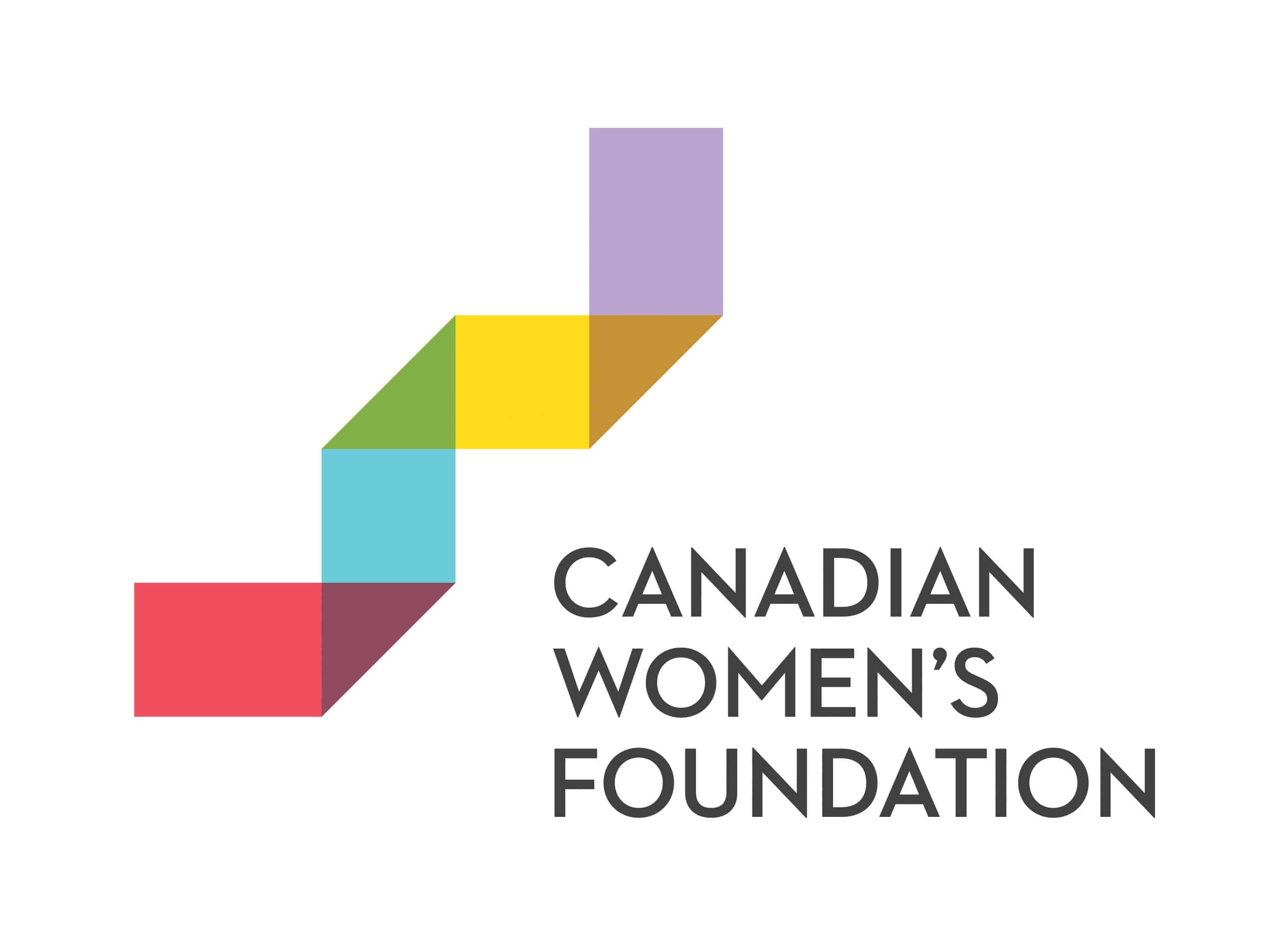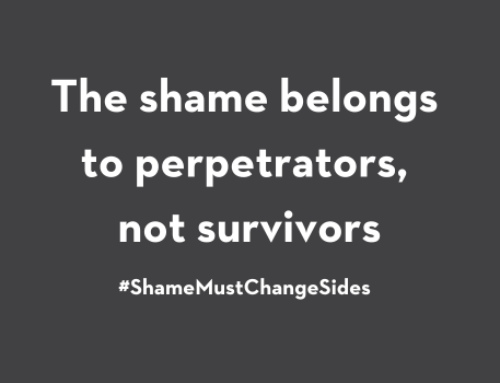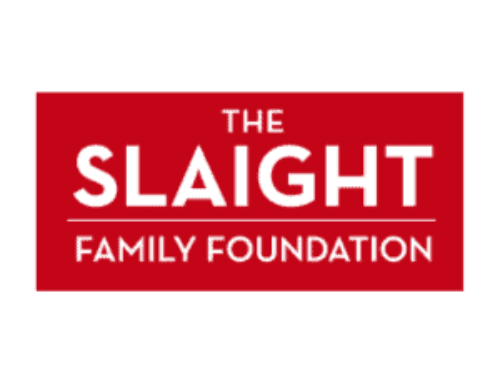
It probably wouldn’t come up in a math, science, or English class. But during a workshop on gender dynamics, a boy in ninth grade opened up about something that was bothering him.
“He talked about how difficult hunting is for him,” says Erin Wynn, Coordinator of the Healthy Relationships for Youth program, which runs in 10 schools in rural Nova Scotia. “He said how terrible he feels that he has to be able to skin an animal and do these things that don’t come naturally to him.”
For many students, the program offers a rare opportunity to talk about how gender roles connect to their own lives. “Usually when we have these conversations, it turns into, ‘Wouldn’t it be great if we didn’t have to uphold these traditional roles?’” Wynn says.
The Healthy Relationships for Youth program is one of 17 teen healthy relationship programs across the country that receives funding from the Canadian Women’s Foundation. The programs aim to prevent violence by teaching students to challenge gender stereotypes, identify abusive behaviour, and develop healthy relationship skills like conflict resolution and setting boundaries.
The programs make a difference: in an evaluation, about 90% of participants said they learned to recognize the signs of an abusive relationship. Sixty per cent of participants said they experienced long-term benefits, including a better understanding of how to create a healthy relationship and how to leave one that isn’t.
But violence prevention programs for young people require a delicate balance. They need to address the fact that women and girls are much more likely to experience physical and sexual assault—and discuss what to do about this violence—without alienating or shaming boys.
Although young people of all genders can experience dating violence, the rates are much higher for girls. Among teens age 15 to 19, rates of police-reported dating violence for girls outnumber those of boys by a margin of nearly 10 to one. Teenage girls also experience more sexual assault: 82% of sexual assault victims under the age of 18 are girls.
“A major part of our program is talking about how gendered violence and unhealthy relationships are everyone’s concern and everyone's duty to fix," Wynn says. “We say: ‘Here’s what’s happening, and here’s how you can rise above it and challenge it.’ We try to empower all of our students to challenge these systems.” Training the next generation to work together for gender equality takes creativity and active engagement.
Teen healthy relationship programs aim to reach young people at a critical developmental stage. Friendships with peers are usually at the top of the priority list, and most are starting to create romantic relationships. By the time they’re 15 years old, about 70% of Canadian youth say they’ve been in a dating relationship, according to the National Longitudinal Survey of Children and Youth. Teens are also spending more time communicating online and through social media.
The explosion of online harassment means it’s more important than ever for young people to learn about healthy relationships. The suicides of Rehtaeh Parsons and Amanda Todd have drawn attention to the devas- tating outcomes of cyber violence. Both online and in person, healthy relationship skills are critical for teens.
The best approach is to actively engage participants, rather than having a teacher lecture at the front of the room. Drawing upon teens’ personal experiences to discuss gender and relationships is a powerful teaching tool that recognizes young people as the experts in their own lives. Since students tend to listen to their peers more than adults, some of the programs train older students to help lead the workshops; this also has the advantage of building their leadership skills.
Gabriel MacDonald, a Grade 12 facilitator in the Healthy Relationships for Youth program, says he sees the program making a difference in the younger students. “It’s the participation part that really sticks with you,” MacDonald says. In an activity about setting boundaries, for example, one student will take steps towards another until that student speaks up and establishes a boundary. “Through activities like that, I think people leave the program with a better understanding than they would have if they’d read about it in a textbook.” As much as possible, the students are seen as participants and decision-makers, rather than as recipients.
“We don’t go in and do typical, formal workshops or PowerPoints, because that doesn’t get us anywhere,” says Simran Gill, Youth and Family Program Coordinator for the RESPECT program, which engages students age 11 to 13 at schools in Calgary. “We try to be creative about how we discuss these things because the students often get very uncomfortable, especially in front of each other.”
To break the ice, facilitators might start by asking students what comes to mind when they hear the words boy and girl. Gill says many students who think gender stereotypes don’t influence them are surprised to discover their own biases. “From the reactions we get, this is the first program that really pushes these students to think about these things.”
RESPECT facilitators ask students to think about the words they use. They examine common expressions like: “Be a man,” “Boys don’t cry,” and “That’s so gay.” They also encourage students to find small ways to step outside their gender comfort zones. “If a boy likes to cook or a girl wants to do something that’s typically only for boys, they should try it and see how they feel,” Gill says.
The young people also discuss how gender roles are learned and reinforced: not just through families and friends but also through advertising, video games, music videos, song lyrics, TV shows, and movies.
In the Healthy Relationships for Youth program in Nova Scotia, facilitators point out that young people often act as “gender police.” Other students often discipline someone who steps outside traditional gender roles. The punishment can include mocking, bullying, shunning, or even physical abuse.
“A big thing for girls is that if you like sports, or something that is considered traditionally manly, you’ll be called ‘butch’ or other names,” Wynn says. “For boys, it’s the same, but it can be a lot more violent.” She says these discussions get the students thinking, “Oh yeah, why is that a big deal? It shouldn’t really matter.”
Role-play can be a powerful tool to help students understand these dynamics, and it’s part of the Building Healthy Relationships program, which is delivered by the Bureau de la Communauté Haïtienne in Montreal. Djimy Rouzard, a Prevention Educator and Teen Life Coach, often asks students to act out a scenario, then discuss healthier ways to handle the situation. Then he asks boys and girls to reverse roles to better understand “how it feels to be in the other person’s shoes.”
The programs focus on stereotypical gender roles because they are at the root of the power imbalance that leads to relationship violence. Helping students to understand this dynamic is key to preventing violence.
One way to introduce students to the reality of gender-based violence is to compare their beliefs with reality. Rouzard gives the students a questionnaire to measure their awareness, then reveals the facts. Many students assume violence against women is a problem elsewhere, but not in Canada. “They see that this is the reality in the country that they live in, and that this is what they have to deal with.”
Facing the reality of violence against women and girls—and discussing the roots of this violence—can raise strong feelings. If boys feel blamed and shamed, they’re not likely to be receptive. In fact, some research suggests that attitudes among boys can worsen after attending a violence prevention program. For programs to change students’ attitudes, facilitators try to emphasize that gender stereotypes hurt both boys and girls, and both can be part of a more equal future.
One strategy to manage these dynamics is to have preliminary discussions about gender in separate groups for boys and girls. That helps students feel safer, speak more openly, and feel less pressure to posture for each other, says Shequita Thompson, Youth Program Coordinator for the ReAct: Respect in Action program at METRAC in Toronto.
For example, girls are typically more aware about the importance of consent, so having separate sessions allows the boys to increase their knowledge in a safe environment where they feel free to ask questions. Then students come back together for a group discussion on more equal footing.
“We see a genuine interest from young men to engage in conversations about consent,” says Thompson. “They ask: ‘If someone says yes but then changes their mind, how does that work?’”
A simple analogy helps to explain how consent is a two-way partnership, and how it can change over time. Facilitators ask participants to imagine that they give a friend permission to borrow their bicycle, then remember they are going to need the bike on Friday, so they tell their friend they can’t borrow it that day. But their friend comes and takes the bike anyway. “And we ask them, ‘Is that OK?’ And the students say, ‘No, because I changed my mind.’”
“And we say, ‘Great, that same concept applies to consent,’” Thompson says. “Consent is not just sexual, it’s part of everyday life.”
The facilitators use different scenarios to help young people of all genders understand that both parties in the relationship have a stake in consent. “There could be a lot of different consequences for how this could play out, in terms of their educational career, their relationship with other folks, and how they’re seen,” Thompson says. “There could be all kinds of different consequences for not understanding how consent really works.”
By helping young people connect the dots between abstract issues like gender stereotypes, consent, violence, and what’s happening in their own lives, teen healthy relationship programs are making a difference.
Teens not only learn to recognize abuse and how to take action if they or someone they know is being abused, they also learn the skills they need to create healthier relationships, now and in the future. “Some students say it changes dynamics with their girlfriend or with their boyfriend, because they better understand their rights,” says Rouzard.
Many program coordinators also notice the changes firsthand. As the RESPECT program progresses, Gill sees a big difference in how the young people interact. “In the beginning of the program when they’re asked to form groups, all the girls go to one side and all the boys go to the other side. They don’t want to mingle. But by the end of the program, they’re friends.”
Many of the Grade 9 students in the Healthy Relationships for Youth program report a better understanding of how gender, race, and sexuality play roles in their lives, Wynn says. “They learn that gender-based violence needs to end because even if it doesn't directly hurt them, it hurts people in their lives that they love and care about—male and female.”
This article was originally published in the Spring 2016 issue of SHE magazine.
Learn More
- Take the pledge to join GEN1 and help build the first generation free of violence against women and girls.
- Sign up for our e-newsletter to have our latest stories and resources sent to your inbox.
- Follow us on Facebook and Twitter to join a national conversation on gender equality.







